Introduction: Communication LoRa ESP8266 & Radio RFM95
One of the most named technologies to be implemented for the Internet of Things, which has very striking features long distance communication and low power reflected in its low consumption, LoRa "Lo ng - Ra nge", this type of modulation has been become very popular in data sending and receiving projects, there are some libraries already implemented for platforms ESP8266, Arduino, Raspberry pi and ESP32.
In this opportunity we will carry out a very simple test with ESP8266 and RFM95 LoRa.
A while ago I got 2 modules / radios LoRa reference RFM95 of HopeRF, at a frequency of 915.0 MHz, then a tutorial recommended Introduction LoRa and the quick review to the module RFM95:
Tutorial
Introduction LoRa & Modulo RFM95 Hoperf
PDAControl
Downloads and Complete Documentation
Communication LoRa ESP8266 & Radio RFM95 #1 http://pdacontrolen.com/comunication-lora-esp8266...
PDAControl
Descargas y Documentacion Completa
Communication LoRa ESP8266 & Radio RFM95 #1 http://pdacontroles.com/comunicacion-lora-esp8266...
Step 1: Materials
VERY Cheap Materials !!
- 2 ESP8266 NodeMCU
- 2 Radio RFM95 ,in my case 915.0 MHz
- 2 white PCBs Adapters for ESP8266 12E/F
- 2 Protoboard
- Wire antenna, UTP cable, calculate length below
Step 2: Video: Introduction LoRa & Module RFM95 Hoperf Electronics
Step 3: Tests Performed
Tests Performed
We will use 2 modules ESP8266 NodeMCU, which will communicate through the SPI bus with the RFM95 modules using the RH_RF95.h library of RadioHead, this test will be very simple, the sending of a message plus a counter from one module to another at 915MHz, Factory demarcation on the back of the PCB. In this tutorial the LoRa modulation will be used, we will not implement LoRaWAN not to confuse.Step 4: Video: Communication LoRa ESP8266 & Radio RFM95 # 1
Step 5: Arduino IDE Code
Arduino IDE Code
In this opportunity we will use the RH_RF95.h library of RadioHead, very used in examples of Adafruit for the test of its PCBs and modules, technically the module ESP8266 configures the parameters of the RFM95 through the SPI bus protocol.
Note: Download and / or github links below.
Since it is a very simple test, only the following parameters will be configured in both modules:
- Potency of transmission : 23 dBm = rf95.setTxPower(23, false)
- Frequency / Band: 915MHz = #define RF95_FREQ 915.0
Important the correct configuration of Pins for ESP8266:
- RFM95_CS = CS (Chip Selector or Slave Selector ).
- RFM95_RST = Reset Radio when initializing.
- RFM95_INT =Interruption from DIO0 output.
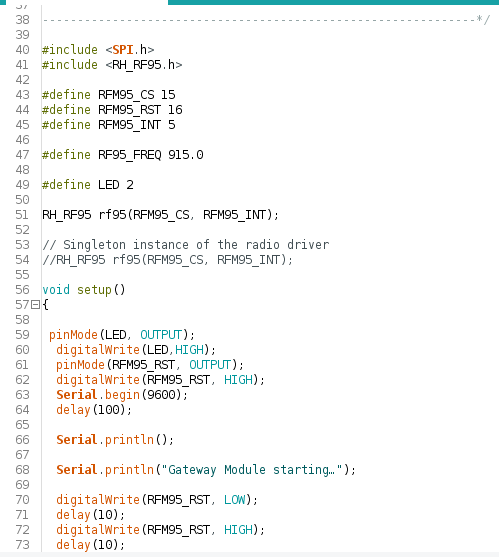
Step 6: Example of Transmission Module # 1
Example of Transmission Module # 1
The message "PDAControl -" and the value of a sent message / packet counter will be sent. Note: Download and / or github links below.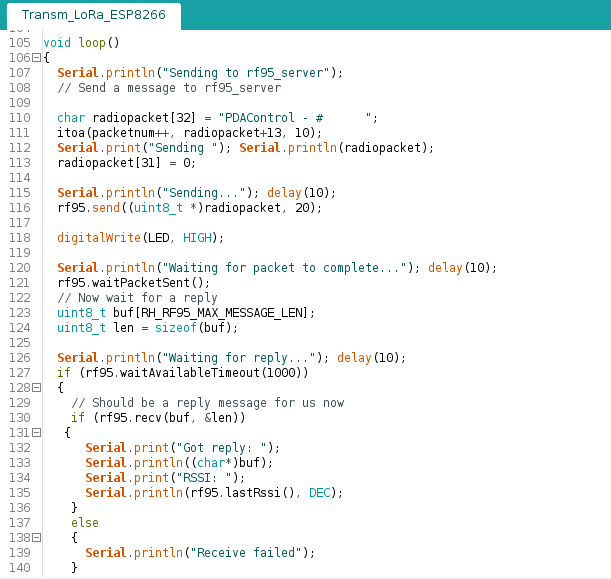
- Serial Terminal ... Transmitting Message.
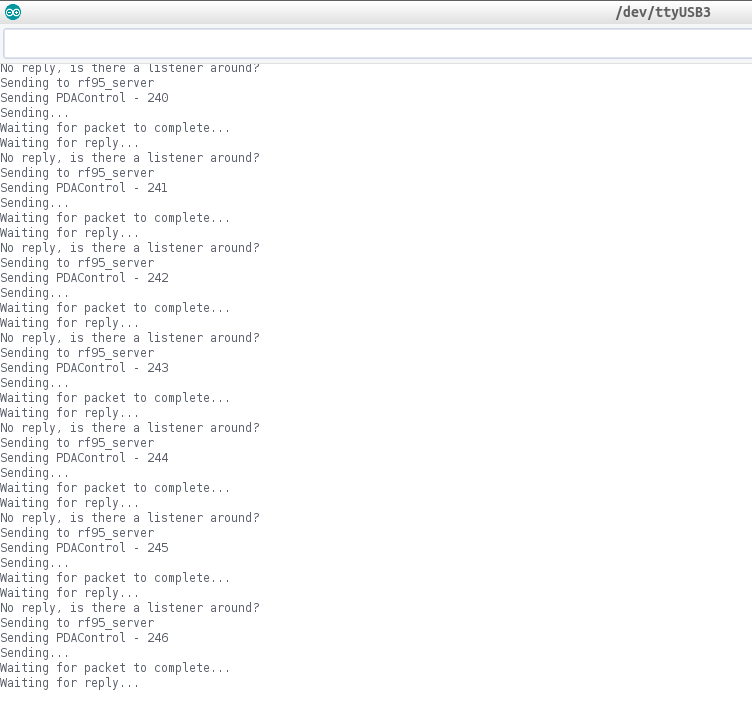
Step 7: Example of Reception Module # 2
Example of Reception Module # 2
The module is in reception mode. Note: Download and / or github links below.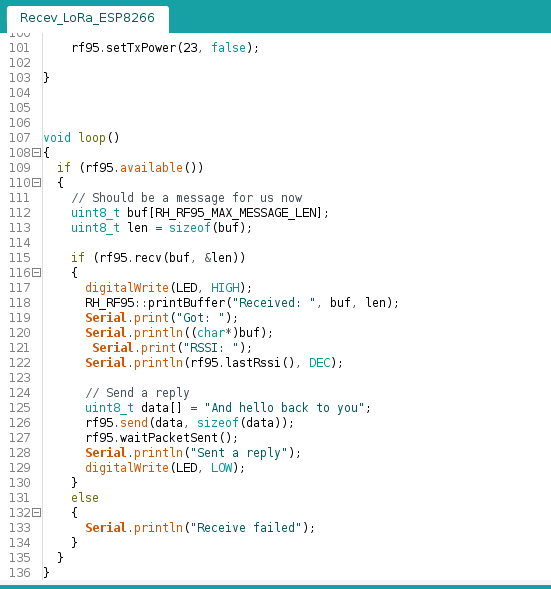
- Serial Terminal ... Receiving, Message and RSSI
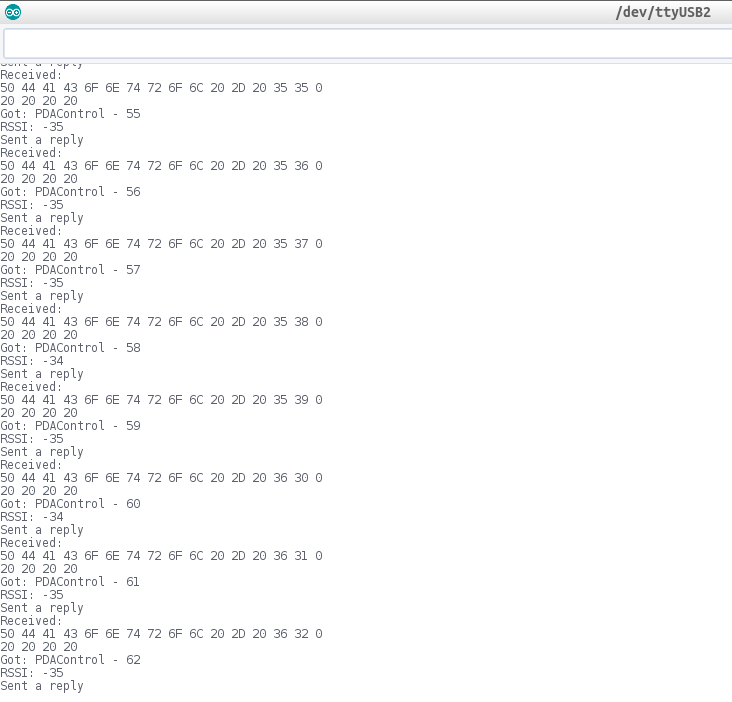
Step 8: Antenna Manufacturing
Antenna Manufacturing
For this test the antenna has been manufactured with UTP Cable (Unshielded Twisted Pair) a 7.8 cm wire was taken, thanks to absolutelyautomation.comfor the information, to calculate the length of the antenna, only I have modified the most important parameter Frequency, in the case of my module it is to 915.0.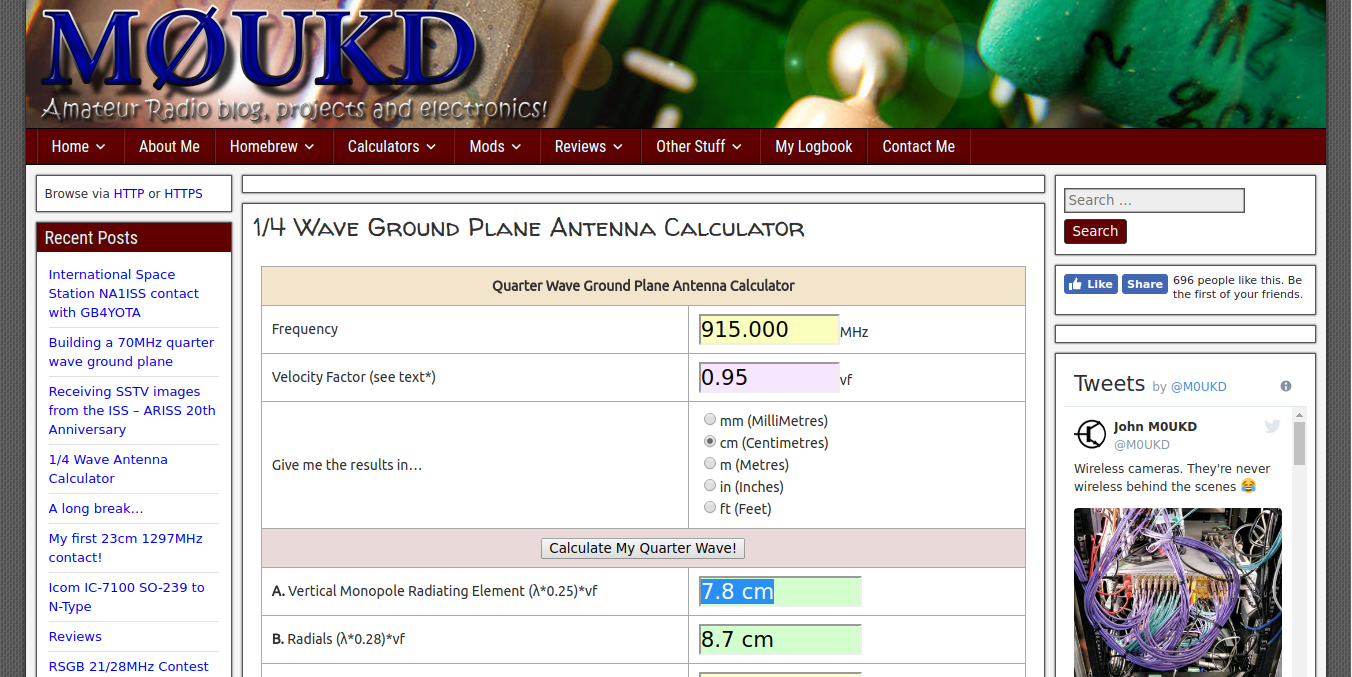
Step 9: Downloads and Complete Documentation
PDAControl
Downloads and Complete Documentation
Communication LoRa ESP8266 & Radio RFM95 #1
http://pdacontrolen.com/comunication-lora-esp8266-...
PDAControl
Descargas y Documentacion Completa
Communication LoRa ESP8266 & Radio RFM95 #1




